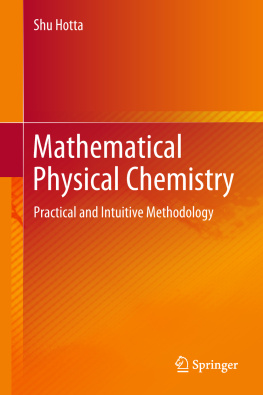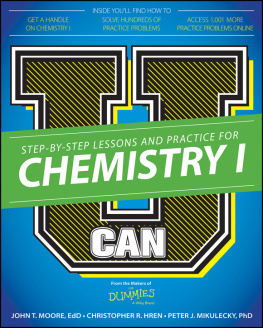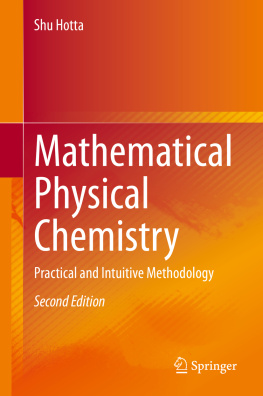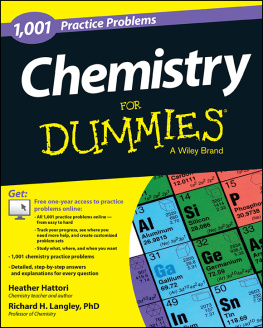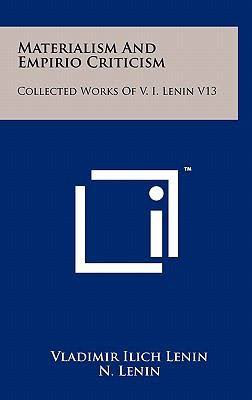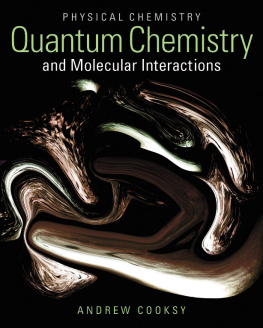The physical in physical chemistry is an important word so we start with simple physical questions and problems about lifting, pushing, twisting, or spinning. All these activities make up the topic known as mechanical work.
How strong is a sloth?
After a nap, a teenage sloth hooked onto a tree branch in the Amazonian jungle stretches and lifts itself up to check on the neighborhood. If the sloth weighs 3.9 kg and it lifts itself 25.0 cm how much work does this take?
1.1 Solution Strategy
What is this question about? It is about work , mechanical work, similar to the work we do when helping a friend carry a piano three floors up, or the work a sloth does when it lifts itself against the force that is pulling it down. The stronger the force or the longer the distance, the more the work to be done, right? The force here is the gravitational acceleration or gravity that is pulling the sloths body down:
Since gravity, g n, is natures constant and we cannot do anything about it, this leaves the body mass as the variable: the larger the mass the stronger the force. We say force is proportional to mass. Now you put everything together and punch a few keys on your calculator.
1.2 Calculation
First, we use Newtons second law to calculate force F :
Body mass is 3.9 kg and gravity is given as g n = 9.80665 m s2 []. You multiply these two and get the answer as
This is the force, now for the work
So every time the sloth pulls itself up by a quarter of a meter it puts in almost ten joules of work. Question answered.
A comment: All things and beings engage in mechanical work; they dont have to have a shape think of running water or even be visible to the eye think of the wind blowing, or a pesky Bacillus streptococcus roaming through the mucus in your throat. Even very small things perform mechanical work, like deep inside your biceps where the molecules that make up the muscle slide along each other when you stretch the muscle. So let us try this little riddle:
Now cometh a little molecule.
A kinesin molecule [] moves up with a force of 1.90 pN (piconewton = 1012 N) over a distance of 25.0 nm (nanometer = 109 m). (A) Calculate the work performed by kinesin. (B) Assuming a mass of 390 kDa compare the force a sloth uses to lift itself (Problem 1.1) and a kinesin molecule uses to propel itself; which one is larger?
1.3 Solution A Strategy and Calculation
Let us do this together, step by step. The first part (A) is about work; the force is already given and we only have to pay attention to the units: pN is piconewton where pico stands for one part per trillion, or 1012. Likewise, the distance is given in very small units, nanometers, where nano stands for one part per billion, 109. All it takes is one multiplication:
So the work done by this little molecule is slightly less than five times ten to the power minus twenty joules!
1.4 Solution B Strategy and Calculation
Now for the comparison this requires a little thinking. Let us compare the two forces, the one used by the sloth and the one used by the kinesin, by calculating their ratio; we will label this ratio as F 1,2:
Note that there should be no unit when you divide two physical quantities. So the sloth is many, many times stronger. Yes, but this is like when you compare how much farther, than an average grasshopper, you can jump (at least we hope you can). But think of how much bigger your body is! Its the same here we should compare the masses of the sloth and the kinesin molecule to get a better idea about who is stronger.
We know the sloths mass, let us call it mass one, m 1 = 3.9 kg. The kinesin molecules mass is 390 kDa. The kDa stands for kilodalton, where each Da or dalton or unified atomic mass unit, amu [] equals 1.660538782 1027 kg. Dalton is the unit name biochemists like to use. Insert these numbers and you get the kinesin mass m 2:
Now compare the two masses, m 1 (sloth) and m 2 (kinesin), the same way you compared the two forces; we will label this ratio m 1,2:
The sloth has a 6.0 1021 larger body mass than kinesin. If the sloth is as strong as the kinesin molecule it should be about 6.0 1021 times stronger. But it is not, it is only 2.0 1013 times stronger and if we compare the ratio of the forces with the ratio of the body masses we will get a ratio or ratios :
So the teenage sloth is only 3-billionth as strong as (an adult) kinesin molecule. A wimp, wouldnt you say?
A note on work and path: You are helping your friend move to a new apartment on the third floor. You grab a chair from the moving truck and carry it upstairs. Let us label the work you have done as w (1). Then you grab another chair and carry it the same way; the work is w (2). But these are not really heavy chairs and you could take both chairs at once and carry them upstairs; the work in this case will be w (1 + 2). Now if you think of the chairs alone, then the sum of w (1) and w (2) will be the same as the work w (1+2). So we can say that work is additive. It turns out that in most cases this is not so. Consider this: you grab the chair and carry it upstairs. Not knowing where your friends apartment is you go all the way to the fifth floor and then, realizing your mistake, climb down and deposit the chair on the third floor. What is the work transferred to the chair? It is w (1). And what is the work you have done? It is a lot more than w (1); it is also different than in the first case when you went straight to the third floor. We are going to state this in English:













